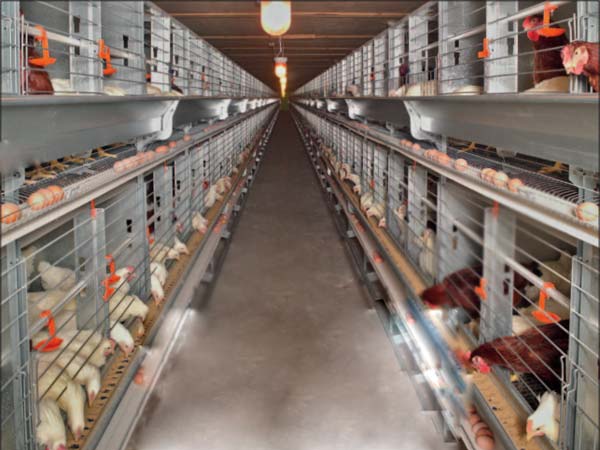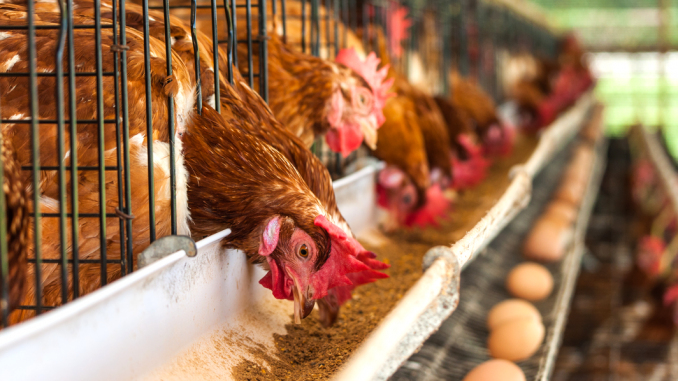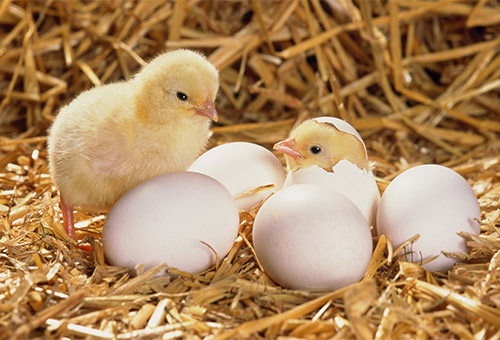Key points of light control technology for laying hens
Light is one of the necessary environmental conditions for laying hens. The intensity, time and color of light are very important for chicken activities, metabolism, growth and productivity, especially for laying hens raised in layer battery cage equipment. Reasonable control of light can improve the production capacity of laying hens and the economic benefits of farmers.

1. The effect of light on laying hens
Light stimulates the hypothalamus directly through the skull or light through the nerve pathway of the nerve lobe. After the hypothalamus is stimulated, it secretes gonadotropin-releasing hormone, which reaches the anterior pituitary through the pituitary portal system, causing follicles The secretion of stimulating hormones and ovulation hormones promote the development of follicles and then ovulation. The developing follicles produce estrogen, which promotes the development and function of the hen’s fallopian tubes. At the same time, estrogen also promotes calcium metabolism to facilitate the formation of eggshells. Ovulation hormones Causes hens to ovulate. In a closed chicken house, no matter how nature changes day and night. The laying of eggs by hens is mostly concentrated in the first 2-7 hours of artificial light.
2. Control of lighting technology
1. Lighting time. The length of lighting time is closely related to the age of sexual maturity of chickens. Too short light time during the rearing period will delay sexual maturity, and too long time will lead to early sexual maturity.
2. Light intensity. Appropriate light intensity is conducive to the normal growth and development of chickens. Excessive light can make chickens irritable and cause severe pecking, prolapse or nervousness. The sudden increase in light intensity during the laying period can significantly increase the rate of cracked eggs, soft-skinned eggs, deformed eggs, and sudden death; low illumination can accelerate the deposition of body fat, but the illumination is too low. It will reduce the chicken's feed intake, reduce drinking water, hinder growth and development, and reduce egg production.

There are four ways to control the light intensity: one is to control the intensity by increasing or decreasing the number of bulbs; the other is to adjust the intensity by changing the bulbs of different power; the third is to control the intensity by adjusting the voltage; the fourth is to control the intensity by adjusting the spacing. But no matter how you adjust, each time you turn on and turn off the lights, you must gradually change from dark to bright, from bright to dark, to give the chickens an adaptation process to prevent frightening the flock. The distance between the bulbs should be 1.5 times the height of the bulb from the ground; the distance between the lamp and the wall should be half the distance between the bulbs, and the lamps between rows should be arranged in a staggered manner to obtain a more uniform lighting effect.
3. Light color. Laying hens are more sensitive to color. Chickens have better vision under red, orange and yellow light. Under red light, it tends to be quiet, with very few pecking habit, a little later in maturity, high feed reward, and egg production slightly increased; yellow light reduces feed reward, delayed sexual maturity, increased egg weight, decreased egg production, and increased pecking ; Green light can make sexual maturity earlier and weight gain faster; blue light can reduce hen egg production.
Main points of feeding and management of using broiler cages to raise chickens
For broiler breeding, most farmers now use broiler cages for breeding. The use of broiler chicken cages to raise chickens is more conducive to the management of the chickens by the farmers, and it is also more conducive to the rapid growth of the chickens. However, if the farmers do not use scientific and reasonable breeding methods to raise chickens, it will be difficult for the chickens to grow well. Today, I will give a detailed account of several key breeding points that farmers should pay attention to when using broiler cages to raise chickens.
1. Group the chickens
When the three-dimensional broiler cages are used to raise chickens, they usually use whole sports chicks. When the density of chicks is too large, group them in a timely manner to ensure that the weight of the chicks is even. The first grouping is usually 12-16 days old. The grouping is too early. It is easy to drill through the gaps in the growing cage, and it will cause a waste of space and energy. The second grouping, at 25-28 days of age, this time grouping should place the heavier healthy parts in the lower layer, leaving the weak young. In summer, because the temperature is too high, grouping can be carried out in advance. In winter, the temperature is cold and the temperature difference between the upper and lower cages is large. You can appropriately delay the time of cage division, and put one more in the lower cage to reduce the temperature difference between the upper and lower cages.

2. Control of temperature
When the temperature outside the chicken house is lower, the temperature difference between each layer is greater. Under normal circumstances, brooding are placed on the highest level, because the highest level has a higher temperature, which is conducive to saving heat. On the first day the chicks enter the farm, the temperature should be controlled at 33-34°C, which can also be adjusted according to the state of the chicks. When the temperature is right, the chickens are evenly distributed, lively, and have a strong appetite. When the temperature becomes low, shrink the neck and bow back and concentrate on the heat source. Squeezing each other, their bodies tremble. When the temperature is too high, water consumption increases, appetite decreases, breathing speeds up, and there is water in neck feathers. In the first week, the temperature dropped to 30°C, and then dropped by 2°C every week thereafter. The use of chicken cages to raise chickens has a high density, which is 1 to 2°C lower than the normal temperature. It is necessary to avoid the phenomenon of heat stress in the flock that causes a decrease in feed intake.
3. Disinfect the chicken house
The chicken house should be thoroughly cleaned and disinfected 5 days before the chicks are put into the house. Here, the farmers need to pay attention to avoid using caustic soda and other corrosive disinfectants for disinfection. After the chicks are in the house, the ground is cleaned every day, and the chickens are disinfected every other day.
4. Drinking water for chickens
After the chicks are placed in the house, it is necessary to ensure that they can drink clean and sanitary water within 2 hours. For the first time the chicks drink water, use warm water at 25°C, add 5% glucose and 0.1% vitamin C to the water, and rinse the drinking fountain frequently. Drinking water should not be interrupted throughout the brooding period. From the second day of brooding, add drugs to prevent pullorum in the drinking water.
The above is the summary to the farmers today, in the process of using broiler feeding cages to raise chickens in Uganda, the main points for the management of chicken flocks. I hope that through today's description, farmers can pay more attention to these points in their future breeding work.
